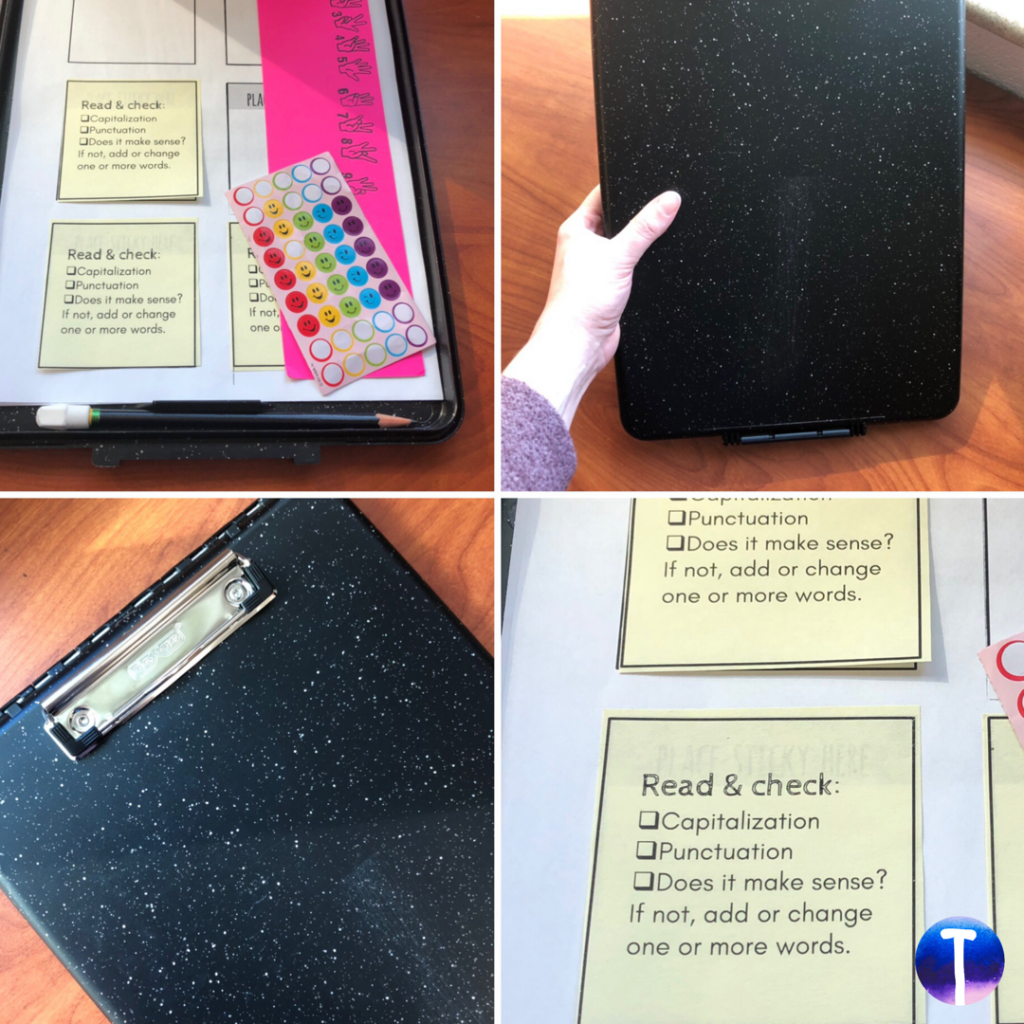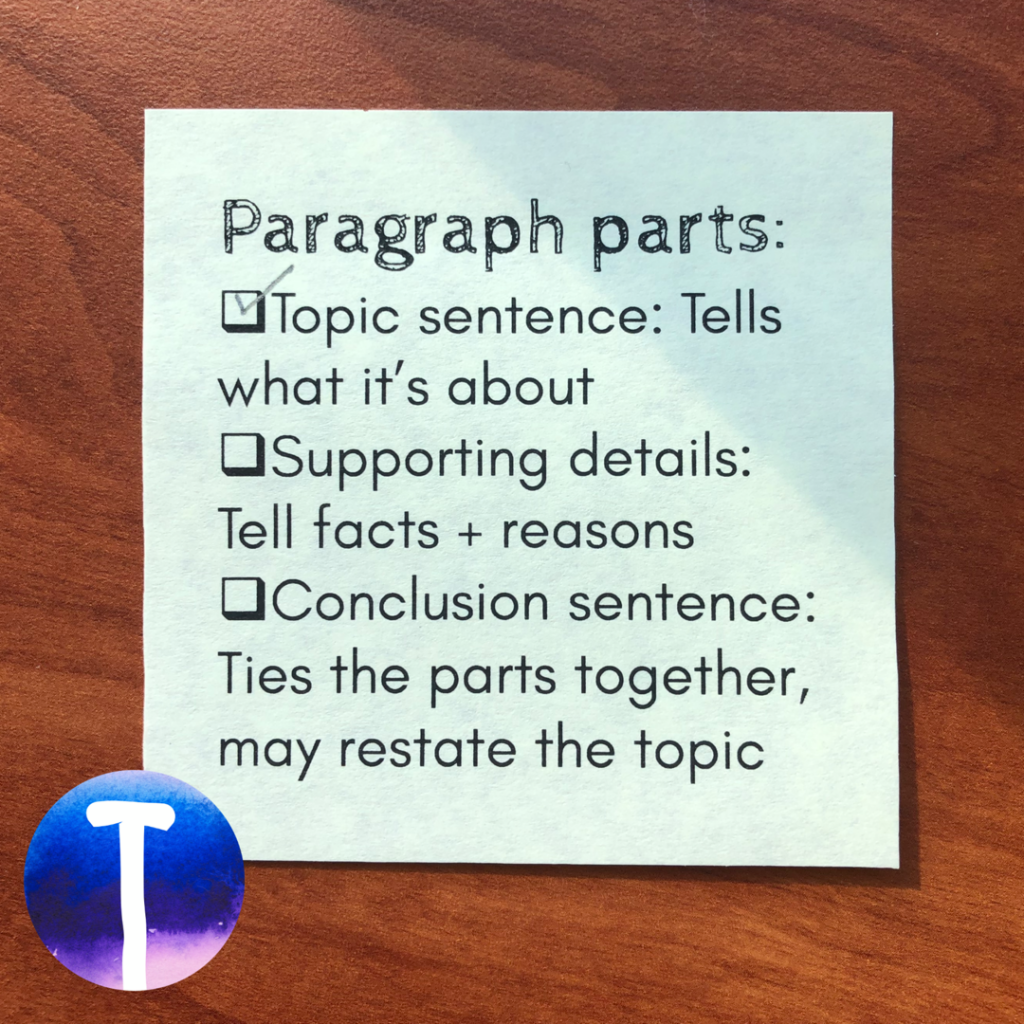I'm doing push-in speech therapy services this year. These are my thoughts and experiences, including how we scheduled students and what I bring with me. The post Push-In Speech Therapy: A Beginner�s Perspective appeared first on Tween Speech Therapy.

This is my first year providing a significant amount of push-in therapy.
I currently push into special education classrooms, and I�m looking at pushing into some general education classrooms next year.
I started by providing push-in sessions in the special ed room for students using AAC. Then I gradually started going into �resource� classrooms (special ed rooms where students go for 45 minutes or so of instruction in reading/writing or math). I go in during the reading/writing time.
A little background
I am really fortunate to have an amazing EC (Exceptional Children) team at my school district. I work at an intermediate school with about 750 students who are in 5th and 6th grade. We decided to try having me push-in so that the students could get the supports they needed without having to miss a lot of class time.
The planning began in spring of the previous school year. Our administration created a schedule that provided an intervention block of 45 minutes for each student. There are two 5th grade intervention blocks and two 6th grade intervention blocks. The students with EC services go to the resource room for reading/writing during their intervention block, and I provide push-in speech therapy in the resource room.
I should note that I don�t provide 100% of my speech therapy as push-in therapy. I still pull students who are working on skills that need to be addressed in the therapy room.
It takes advanced planning.

Like I said, the EC teachers and I started planning for this during the spring of the previous school year. We grouped students so that each resource period I pushed into had several speech students. This is really important to do in order to ensure that you have time during the week to see all of the students.
First, the EC teachers made a rough draft of what their groups would be the next year and which period each group would be seen. We got data on incoming students from the feeder elementary schools to help us make these groups.
I looked at their rough draft and highlighted all of the students I wanted to see via push-in therapy. Then we moved students around to consolidate the speech students as much as possible. It worked out that each of the four groups I see has at least three speech students.
Some SLPs also separate students into once a week and twice a week groups. I didn�t do that this time, but it�s something I might consider in the future.
Be prepared to step out of your comfort zone.

I was used to providing therapy in my own space, and for the first few weeks I felt totally overwhelmed and wondered if I was making a huge mistake.
One of the logistical issues was where I would physically place myself. The resource rooms are smaller than normal classrooms at my school, so moving a regular student chair around was impossible to do without causing a big disruption. I ended up buying a small folding chair the size of a stool and keeping it in the resource room.
Another issue was tracking data on my students� goals. Since my 5th graders came to me from different elementary schools, they all had goals written by different SLPs. Some were working on vocabulary goals, while others had goals for grammar or answering questions.
It took me several weeks to get the hang of collecting data on everyone�s goals. The teachers� curriculum, called Language! (exclamation point included), turned out to be wonderful for incorporating speech therapy, because it focuses on more than just phonics.
The most important advice I would give anyone just starting this out is to give it time. At first you�ll feel like you have no idea what you�re doing. You will wonder if you�re failing your students or making a fool out of yourself. Just stick with it and it will get better.
How we plan and structure the lessons
The teachers typically do the the grammar and vocabulary portions on the days I�m there, and save the phonics stuff for the other days. There have been exceptions to that, of course, such when they were learning about the placement and voicing of sounds within the mouth.
I have a common planning time with each of the teachers that I use as needed to check in about upcoming lessons. Since the teachers follow a routine with their lessons each week, we often just chat at the beginning of class about what we�re going to do.
Most of the time we use the �one teach, one assist� model, although I�d like to explore the other models more next year. A benefit of this model is that I can provide extra support to my students in the specific areas that they need it. The biggest drawback is that I sometimes feel like I am interrupting the teacher.
What I bring with me into the classroom
I use individual data sheets for each student (free template here) and I bring those with me, along with a storage clipboard. My clipboard holds notes, stickers, a basic sign language graphic, and sticky notes.

I customize my sticky notes for both language and articulation. For language, I use reminders to help them with their writing skills. For articulation, I print text and pictures onto a sticky note, put it on the student�s desk, and point to it when the student needs a cue to use their speech skills.
I have uploaded my sticky notes templates to my Teachers Pay Teachers store. Below is a picture of a another writing sticky note that I made.
Overall reflections on push-in speech therapy so far
All in all, I have enjoyed doing push-in speech therapy and want to continue doing it. I�ve gotten to know more students in the building, and I�ve been able to integrate my interventions into the curriculum in a more meaningful way.
It�s also been a great learning opportunity to go into someone else�s space and see how they do things. I�ve picked up some great ideas from observing the teachers I work with.
While I was initially worried about being able to provide skilled interventions in the classroom, I have figured out how to do it. I really like the way Shannon, from Speechy Musings, put it in her recent Instagram video. She said that if you can make a game into therapy, you can make a classroom activity into therapy.
I�ll continue to update my blog with my push-in therapy experiences. I would also love to hear about your ideas and questions. Feel free to send me an email or leave a comment below.
The post Push-In Speech Therapy: A Beginner�s Perspective appeared first on Tween Speech Therapy.








